Genealogy Research Resources
The Next Step: Finding a Database for You
April 25, 2013 by EJRT
Filed under Archives, Articles, Genealogy Research Resources, Online Tools
 Genealogy is all about connections — the connections between you and your ancestors, between your ancestors and their historical context, and amongst all of the facts and records that together help to weave the tartan of your past.
Genealogy is all about connections — the connections between you and your ancestors, between your ancestors and their historical context, and amongst all of the facts and records that together help to weave the tartan of your past.
Just as no one resource can provide all your answers, no one tool will solve all your problems. For every piece of the puzzle you need to improvise a new solution — so, to avoid spinning your wheels against a brick wall it’s best to get acquainted with all of your options.
Genealogy Beginner can get you started with knowledge of all the best practices and methodology, but where do you go from there? An easy first step is an online service like Ancestry.com, where you can easily search birth, marriage, and death Records
, browse their Obituary Collection
, and then start your free family tree
to keep it all organized.
There are many such services, each with their own unique archives and site features. Ancestry.com is perhaps more user-friendly collaborative than other services, in that once you enter in some basic information the service actively works to fill in the blanks, drawing upon both public records and the work of other members. If the suggestions sound right, just click to add them to your own tree — which then becomes part of the cycle, as the more complete your tree the more the site’s search engine has to work with.
The best part of services like this is that they give you a start in collecting your thoughts without asking for much of an investment, either in terms of time or money. In the case of Ancestry.com, the basic subscription is fairly inexpensive; to get overseas records you will need to upgrade, which is a little more. If you decide it’s not what you need, you can just cancel and try another service; all you’re out is maybe ten, fifteen bucks. If you cancel within 14 days, there’s no charge at all.
What they’re banking on is the appeal of their interface and search tools — and you know what? It’s a good bet. What would be hours of manual, tedious research is reduced to a few seconds of behind-the-scenes pattern-matching. There is of course a limit to any online database, and the wow value here should be over by the time your trial period is up — but even for an experienced genealogist the elegance and dynamism of their tools can be hard to give up.
So, it’s worth a shot. Try a membership at Ancestry.com, and if it’s not your thing then at least you’ll better know your options. If it is, there’s one more tool under your belt.
Native American Genealogy
November 30, 2012 by ramona
Filed under Genealogy Research Resources, Latest News, Sharing Genealogy Information
 Native American genealogy can present some unique research problems, distinct from family trees that are deeply rooted in Europe and Great Britain.
Native American genealogy can present some unique research problems, distinct from family trees that are deeply rooted in Europe and Great Britain.
Native American genealogy is simply not a straightforward matter of pouring through the usual church and census records.
Researchers on the trail of their Native American ancestors need to develop an understanding of tribal:
- Traditions
- Culture
- Naming customs
- Kinship systems
- History
All of which vary greatly between the different nations.
The good news for genealogy beginners’ starting out with Native American genealogy is that there is no shortage of resources for learning the basics of the nation you are researching. Two wonderful sources to start the ball rolling are the National Archives: Native American Heritage and Family Search: American Indian Genealogy
Once you have done your homework, here is another excellent resource you will find enriching.
Native American Genealogy: A recorded history
Edward Curtis
In the early 1900s, photographer Edward Curtis began to fulfill a major life goal: to record as much of the traditional life of Native American peoples as possible, before it disappeared.
Endorsed by President Theodore Roosevelt and funded by financier J.P. Morgan, Edward Curtis devoted the next thirty years of his life to the project. Travelling across the United States and Canada as far as the Northwest Territories Curtis documented over 80 tribes, for which he earned the nickname “Shadow Catcher”.
What makes Curtis’ body of work so remarkable is his insight that the present is a result of the past, and therefore must play a significant role in the portrayal of a people. To this end Curtis was not satisfied with posed pictures taken on reservations but instead set out to capture life lived or as it was lived in more natural settings.
Due to his efforts, now an invaluable collection of media includes recorded:
- Language
- Music
- Tribal mythologies and history
- Described tribal population
- Traditional foods
- Dwellings
- Clothing
- Games
- Ceremonies
- Burial customs
In addition to this, Curtis managed to capture the images of many notable Indian people of the time, including Red Cloud, Geronimo, Medicine Crow and Chief Joseph.
http://youtu.be/oVPLF9tXWlg
In due course Curtis shot over 40,000 photographs, conserved 10,000 audio recordings and made what is considered the world’s first documentary film.
Genealogy: Solving History’s Mysteries
October 23, 2012 by ramona
Filed under Articles, Genealogy Research Resources, Latest News
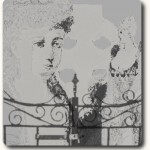 A skeleton excavated in 1992 at London’s historic Crossbones Cemetery has puzzled archeologists from the Museum of London for several years.
A skeleton excavated in 1992 at London’s historic Crossbones Cemetery has puzzled archeologists from the Museum of London for several years.
A team of forensic scientists and historical researchers from The Center for Anatomy and Human identification at Dundee University takes on the enigmatic case. Using scientific methods and following a trail of genealogical records, the team endeavors to discover the identity of the skeleton nick named “Crossbones Girl” and the circumstances that led to her death.
Crossbones Cemetery
Crossbones Cemetery is located in London’s oldest borough and dates to medieval times. Although it is classified as a pauper’s burial ground it was more than that. Well documented in historical records, Crossbones Cemetery was well known to be a “single women’s” final resting place — in modern terms, a graveyard for prostitutes.
In a 1598 survey of London, historian John Stow writes, “I have heard of ancient men, of good credit, report that these single women were forbidden the rites of the church, so long as they continued that sinful life, and were excluded from Christian burial, if they were not reconciled before their death. And therefore there was a plot of ground called the Single Woman’s churchyard, appointed for them far from the parish church.”
By the 19th century the graveyard’s reputation was well known, as can be seen in the 1833 writings of antiquarian William Taylor: “’There is an unconsecrated burial ground known as the Cross Bones at the corner of Redcross Street, formerly called the Single Woman’s burial ground, which is said to have been used for this purpose.”
Today regular vigils are held in memory of the souls buried in this notorious grave site.
The Case
Excavated from the upper layers of this infamous cemetery is the heavily scarred skeleton of a young woman. After an examination of her remains forensic scientists decode the message in the bones.
- Taking measurements, it is concluded that she was about 4’7″ tall.
- Stable isotope analysis reveals a poor diet.
- 3-D X-rays of the skeleton indicate that she was in her teens (possibly between 16 – 19) at time of death.
- The condition of the skeleton shows undeniable signs of syphilis.
- Further analysis discloses that she underwent Mercury treatment, commonly used at the time to relieve the symptoms of syphilis (which affected roughly 15% of the British population).
- Scientists theorized that it is unlikely she died of syphilis, as the skeleton shows signs of healing.
Theory: They are looking at a very unfortunate young woman who had to turn to prostitution for her survival.
Can Genealogical Documents Tell the Story?
Scientific research can only uncover so much; now it is up to the historical researchers to flesh out the rest of her story using genealogical methods and documents. A researcher from the London Metropolitan Archives is brought in to see if a paper trail can be established.
First, a timeline needs to be determined.
The remains of “crossbones girl’” were recovered from the upper layers of the cemetery, which was closed in October of 1853. By cross-referencing hospital, workhouse, and burial registers, a period between 1851 and 1853 is settled through process of elimination. The age of the subject made this process easier, as deaths of the very old and very young are common but deaths in the 16-19 age group are far less so.
Among the records consulted are:
- St. Thomas’s Hospital – dead book (a charity hospital in Suffolk)
- The City of London burial index
- The Hakney Archives
While looking through the St. Thomas’s Hospital dead book, a name jumps out. It is the name of a woman who was placed in what was then called the “foul” ward — a ward for women suffering from syphilis.
The name of the patient is Elizabeth Mitchell, a 19-year-old woman who came in to be treated for “discharge and sores”. In the margins beside her name is an entry that states that the patient died from pneumonia on 15 Aug 1851. (This coincides with the scientists’ suggestion that she did not die from the disease.) Also strengthening this is entry #2090 from the St. Xavier parish records:
- Eizabeth Mitchell, aged 19
- Buried 22 Aug 1851 by Mr. Day, Minister.
- Her residence was listed as St. Thomas Hospital.
While this is not 100% conclusive proof, the burial record puts Elizabeth Mitchell in the same part of the graveyard in which the skeleton was found.
In the end, scientists and historical researchers alike were satisfied that “Crossbones Girl” could very plausibly be, and likely is, Elizabeth Mitchell.
Genealogy is already an exciting and challenging pastime; however, when you add elements of archaeology and forensic science to genealogical detective work it is nothing short of mesmerizing. Add to this the aspect of DNA and you begin to see not only one new direction genealogy has taken but the future possibilities as well.
A Family History of Witchcraft
October 17, 2012 by ramona
Filed under Articles, Genealogy Research Resources, Latest News, Sharing Genealogy Information
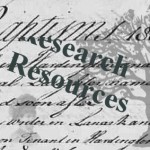 “In the Nineteenth day of March last I went to Salem Village, and lodged at Nathaniel Ingersol’s near to the Minister Mr. P.’s House, and presently after I came into my Lodging, Capt. Walcut’s Daughter Mary came to Lieut. Ingersol’s and spake to me; but suddenly after, as she stood by the Door, was bitten, so that she cried out of her Wrist, and looking on it with a Candle, we saw apparently the marks of Teeth, both upper and lower set, on each side of her Wrist.”
“In the Nineteenth day of March last I went to Salem Village, and lodged at Nathaniel Ingersol’s near to the Minister Mr. P.’s House, and presently after I came into my Lodging, Capt. Walcut’s Daughter Mary came to Lieut. Ingersol’s and spake to me; but suddenly after, as she stood by the Door, was bitten, so that she cried out of her Wrist, and looking on it with a Candle, we saw apparently the marks of Teeth, both upper and lower set, on each side of her Wrist.”
Such is one account of a person afflicted by witchcraft in Salem Village in 1692.
Mary, daughter to Militia Commander Jonathan Walcott was one of the first of the accusers in the Salem Witch trials and one of the accusers of Bridget Bishop, the first woman to be executed during the trials.
All Hallows Eve is quickly approaching and those with ancestors involved in witch trials may be interested in learning about some fantastic research resources.
Number one on the list is, The Wonders of the Invisible World Being an Account of the Tryals of Several Witches Lately Executed in New-England, to which is added A Farther Account of the Tryals of the New-England Witches written by Cotton Mather and Increase Mather. You can read about Mary, Bridget and many others in this account of the trials given by peoples involved. A digital copy of this book can be found free at Project Gutenberg.
Another interesting resource is The Associated Daughters of Early American Witches. This group focuses on sustaining the memory of those accused of witchcraft in Colonial America. This membership only society also actively searches out living descendents of the accused.
If your interests lie overseas, you will want to check out The Witch Hunts (1400-1800). Amidst the great information on the website, is an online mock-up of a witch-hunt set in Germany in 1628. In this simulation, you play a fictional character however, the events are historically accurate (warning, this may be disturbing to some). The outcome of your trial will depend on choices you make during the simulation.
One last resource is the Survey of Scottish Witchcraft 1563 – 1736. On this site, you will find a database containing the names of almost 4,000 people accused of witchcraft in Scotland.
Before you start trick or treating for your ancestors download Genealogy Beginner’s fantastic Family Tree Charts and Research Tracking Forms available with your 30-Day FREE TRIAL.
Record Guides at RecordsBase.com
October 9, 2012 by ramona
Filed under Articles, Genealogy Research Resources, Latest News, Sharing Genealogy Information
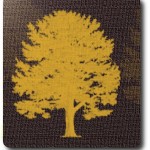 RecordsBase.com is a genealogy website designed to help family history hunters locate US documents to fill out the branches on their family tree. New to the site (in response to a review suggesting more resources would be helpful in this area) are record guides created to help genealogists locate the right records from their collection of over 2 billion public records.
RecordsBase.com is a genealogy website designed to help family history hunters locate US documents to fill out the branches on their family tree. New to the site (in response to a review suggesting more resources would be helpful in this area) are record guides created to help genealogists locate the right records from their collection of over 2 billion public records.
RecordsBase.com’s PR manager, Ashley Evans, says,
“Every state and county has its own way of storing public records and archival documents, by adding this content to our website, we help members navigate through that complex maze and find the records they need, no matter where and how they are stored. This is just one more way RecordsBase.com is listening to the customer and finding ways to meet their needs for a more pleasant user experience on our website.”
Included in the guides are:
- Steps on tracing archival documents
- Added content for the 100 largest counties in America
- Information provided by state
To use the guides simply click on the type of record you wish to search on the left sidebar. For instance clicking on Death Records will take you to a page that explains:
· Types of Death Records (certificates and indexes)
· Information Found in Records
· Locations for Death Records
· Restriction to Death Records Access
· Online Death Records Search
When you are ready to begin your research you will find that, the search forms are easy to use and allow you to search by individual state and county.
Like so many genealogy services, the site does require a fee based membership. Available in either a 1-Year Premium Membership that includes an unlimited number of searches including death, divorce, birth, military, marriage, census records, immigration lists, cemetery listings, obituaries & newspapers, surname history, and passenger lists.
A 3-Month Basic Membership that includes 3-months access to search millions of records, including death, divorce, birth, military, marriage, cemetery, and census records.
Before you begin searching, download your Family Tree Charts and Research Tracking Forms available with you 30-Day Free Trial to Genealogy beginner.
Genealogy Wikis
October 1, 2012 by ramona
Filed under Articles, Genealogy Research Resources, Latest News, Sharing Genealogy Information
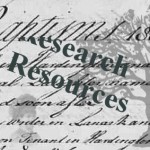 Have you used a wiki for genealogy?
Have you used a wiki for genealogy?
Genealogy wikis are growing in popularity and it is no wonder as they are shaping up to be a fantastic free resource for doing genealogy research. Not to mention a great way collaborate with others who have similar research interests.
Two genealogy Wikis that stand out are WeRelate (over 2,000,000 pages of information on individuals and families) and Wiki Tree (3.9 million profiles).
Both sites are free use and allow users to upload GEDCOM files, add scanned documents, photos and maps. In addition to this, the sites are filled with family history stories, biographies, and pedigrees (Family Trees).
Here is a short list of just some of the ways you can use a wiki for your genealogy:
- As a collaboration tool that allows researchers to work together to research, compare, publish, correct and update family tree information.
- As a research tool to locate data on your research interests
- As a great resource to learn about genealogy
- Plan a Family Reunion – advertise, plan, coordinate, and communicate with your family
- Blog about your research
Using a genealogy wiki is easy; as soon as you register, you can begin working on your personal genealogy pages by adding your profile, starting a watch list or simply go straight to building your family tree.
Genealogy Just Got Easier
September 19, 2012 by ramona
Filed under Articles, Genealogy Research Resources, Latest News, Sharing Genealogy Information
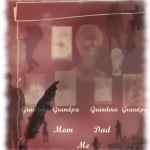 If you have been keeping your eye on MyHeritage.com, you already know that genealogy just got a little easier.
If you have been keeping your eye on MyHeritage.com, you already know that genealogy just got a little easier.
Why?
Because MyHeritage has an amazing new software that can help you find ancestors while you sleep.
The new software called Record Matching is constantly working to compare every individual entered in a family tree on their site to over 4 billion historical records. For users of My Heritage, Record Match will notify you when it has found matching documents such as:
- Birth, Marriage or Death documents
- Census records
- A tombstone photo
- A newspaper article
- Books
All of this information is found automatically using semantic analysis…and…it is in addition to the automatic matching that checks for your ancestors in other user’s family trees.
Family Tree Tools
Possibly the most phenomenal thing about this search software is…not only does it match Robert & Bob it can actually translate languages to find matches. Each match found comes with a confidence score using a star system so you can check out the most likely matches first, which is huge time saver.
Another little tool that family history hunters are going to love is the option to confirm or reject a match. However, one word of caution here, if you do find a match you will have to manually transfer the data y to your family tree and create your source citation to go with it.
The Price of an Ancestor
By now, you are probably wandering how much this is going to cost. Well here is a little good news – bad news. First, the good news; the Record Match feature is free to users with one or more family trees on my heritage. What this means is that you will be automatically notified of matches and given a short transcript or extract of the matching record. The bad news…viewing the full record or document requires a subscription. However, you do have a pay as you go option if you do not want to purchase a full subscription.
Visit MyHeritage Record Matches to find out more about this cool genealogy tool…but before you go, make sure you are ready with some genealogybeginner.com Family Tree Charts and Research tracking forms: available with your 30-day free trial.
Medieval Scottish Roots
September 4, 2012 by ramona
Filed under Articles, Genealogy Research Resources, Latest News, Sharing Genealogy Information
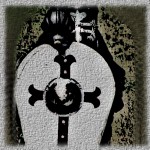 If you are ready to start digging for ancestors that go way-way back …all the way, back to medieval times on the British Isles.
If you are ready to start digging for ancestors that go way-way back …all the way, back to medieval times on the British Isles.
Here is a website that you should put at the top of your family history list.
People of Medieval Scotland is an amazing database containing 8600 records. This database consists of all known people of Scotland from 1093 to 1314 and it is the culmination of two projects funded by the Arts and Humanities Research Council.
The Projects
The Paradox of Medieval Scotland is a study of the social relationships before the wars of independence. This will be riveting for those who have traced their British ancestry back to Anglo-Norman origins. The information drawn from over 6000 charters provides biographical data for all known Scottish peoples between 1093 and 1286.
The Breaking of Britain is concerned with the period extending from Alexander II’s attempted revival to the abolition of cross border, land holding by Robert the Bruce.
The Database
The database as a whole is a collection of information on every known individual mentioned in documents relation to Scotland between the death of Malcolm III in 1093 to Robert the First’s parliament in Cambuskenneth in 1314. What makes this database so special is that it is based on the relationships between the people named in the documents.
The next feature that separates this database from so many others is the database tutorial, which makes navigating it easy…even for a genealogy beginner. Searching the database can be done using a broad base of criteria such as Institutions, factoids, people, sources, relationships, transactions and terms of tenure.
For example, a search for the surname Sinclair under the “Factoid” search returns a list of Sinclair’s by name ranging from 1093-1314. Clicking on one these will bring up a pop up box that gives you a short biography and an option to view the full record. Choosing to view the full record will move you to page with a total number of associated factoids such as:
Transaction factoids: Lists transactions such as gifts of land, general correspondence, oaths of fealty and much more
Relationship Factoids: Names relationships connected to the individual, for instance both familial and guardianships
Title Factoids: Lists all titles and offices held by the individual
Witness Factoids: Documents on which the individual is listed as a witness
Family Tree
After browsing through the available documents users also have the option of looking at the listed family tree for the individual. Under my Sinclair search, I found the family tree for the line on a tab at the top of the page. Clicking on this menu item the family tree listed three trees in which this individual could be found: Scottish Royal Family, Earl David descendants, English royal family and Manx royal family.
Although the database covers all territory, which was to become part of Scotland prior to the death of Alexander III, those looking for specific genealogy information on individuals from Orkney or Shetland will be disappointed if they try a geographic search, However if you know who your ancestors are from those areas there certainly is a great deal of information included.
The last two points that should convince you to put this site in your favorites is that the database is free and there is no need to register to use it.
Before you head off to visit this amazing website, be sure to download your free Family Tree Charts, available with your 30-day free trial membership to genealogybeginnner.com.
Is There Gold in your Family Tree?
August 14, 2012 by ramona
Filed under Articles, Genealogy Research Resources, Latest News, Sharing Genealogy Information
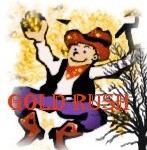 One of the most enjoyable things about climbing your family tree is discovering ancestors who were involved in one of histories great events.
One of the most enjoyable things about climbing your family tree is discovering ancestors who were involved in one of histories great events.
August 16th marks the anniversary of the Klondike Gold Rush and any genealogy beginner that descends from one of the miners or “Stampeders” who set off to strike it rich in 1897 needs to know about Yukon GenWeb.
The Yukon GenWeb is a compilation of free genealogy resources loaded with links and information to all things related to the “last great gold rush”. Their resources include a listing of related Archives & Libraries, Books and Publications, Yukon Cemeteries, Census Returns, Church Records and Registers.
Some of the highlights of their resources include:
- A collection of Directory Records with a link to Ferguson’s 1901 Alaska/Yukon Directory, which lists over 24,200 gold rush participants
- Pioneer Biographies in their Family Records collection
- Relevant First Nations information
- Immigration records including Border Entry, 1908-1918: List of Ports, Dates and Microfilm Reel Numbers
- Passenger Lists, 1865-1922
- Land Titles Records
- Military Records
Before you head off to search for your Gold Rush ancestors make sure you sign up for a 30-day free trial membership to Genealogy Beginner and download your complimentary family tree charts and research tracking forms.
You are going to need them when you start exploring the Pan for Gold Database, North West Mounted Police (NWMP) – Personnel Records, 1873-1904, Manager & Proprietors of Historic Yukon & Alaska Roadhouses, Hotels and Saloons plus so much more!
Genealogy and Volunteers
August 12, 2012 by ramona
Filed under Articles, Genealogy Research Resources, Latest News, Making genealogy Connections; Reaching out
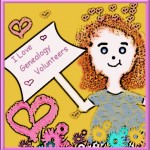 Whether you have been researching your family tree for a long time, or are just getting started, it is likely you have benefited from the services of a genealogy volunteer.
Whether you have been researching your family tree for a long time, or are just getting started, it is likely you have benefited from the services of a genealogy volunteer.
Genealogy volunteers are often hiding behind the titles indexer, transcriber and look up. You can find them anywhere in the world from local libraries to National Archives.
The work they do often helps thousands if not millions of family history hunters across the globe on a daily basis.
One great example of genealogical volunteerism is the progress that has been made on the 1940 US Census. With the aid of tens of thousands of Family Search volunteers, the 1940 census has now been fully indexed…after only five months. As if that is not accomplishment enough, other volunteers were busy adding to the Historical Record Collections for several countries.
In fact, anywhere you find free genealogical resources there are genealogy volunteers behind it. Some genealogy volunteer groups past and present that deserve a mention are:
· Genealogy Helplist
· Genie Angels
· USGenWeb Project
· American Local History Network
· Missouri Slaves/Slaveowner Database
· Random Acts of Genealogical Kindness
· Olive Tree Genealogy
No matter what size the project from indexing a census or helping out at a local library. Genealogy volunteers deserve a huge thank you from all of us genealogy beginners for making our ancestors a little easier to find.
Be prepared to start tracking down the missing branches on your family tree with Family Tree Charts and Research Tracking forms available with your 30- Day free trial to Genealogy Beginner.
